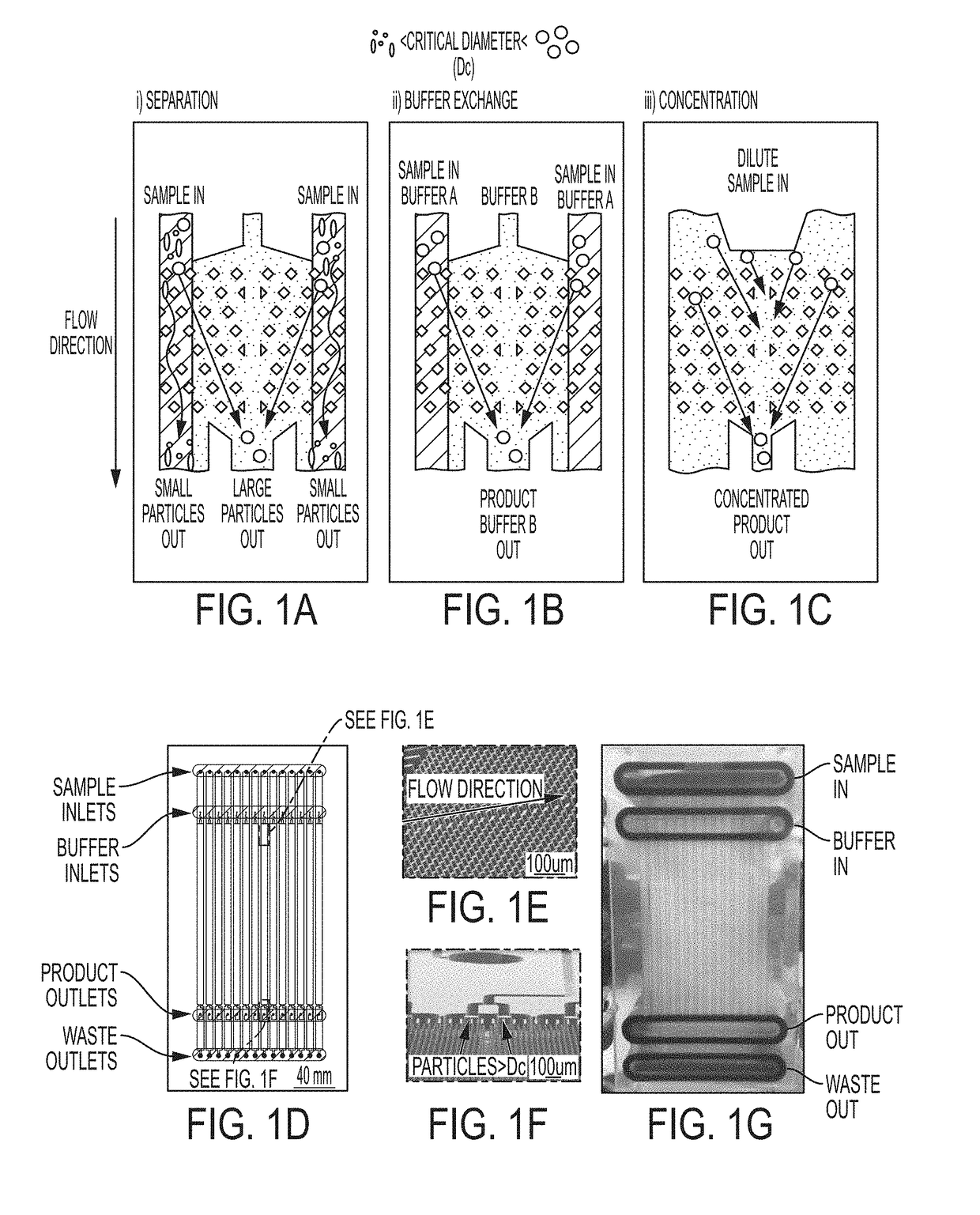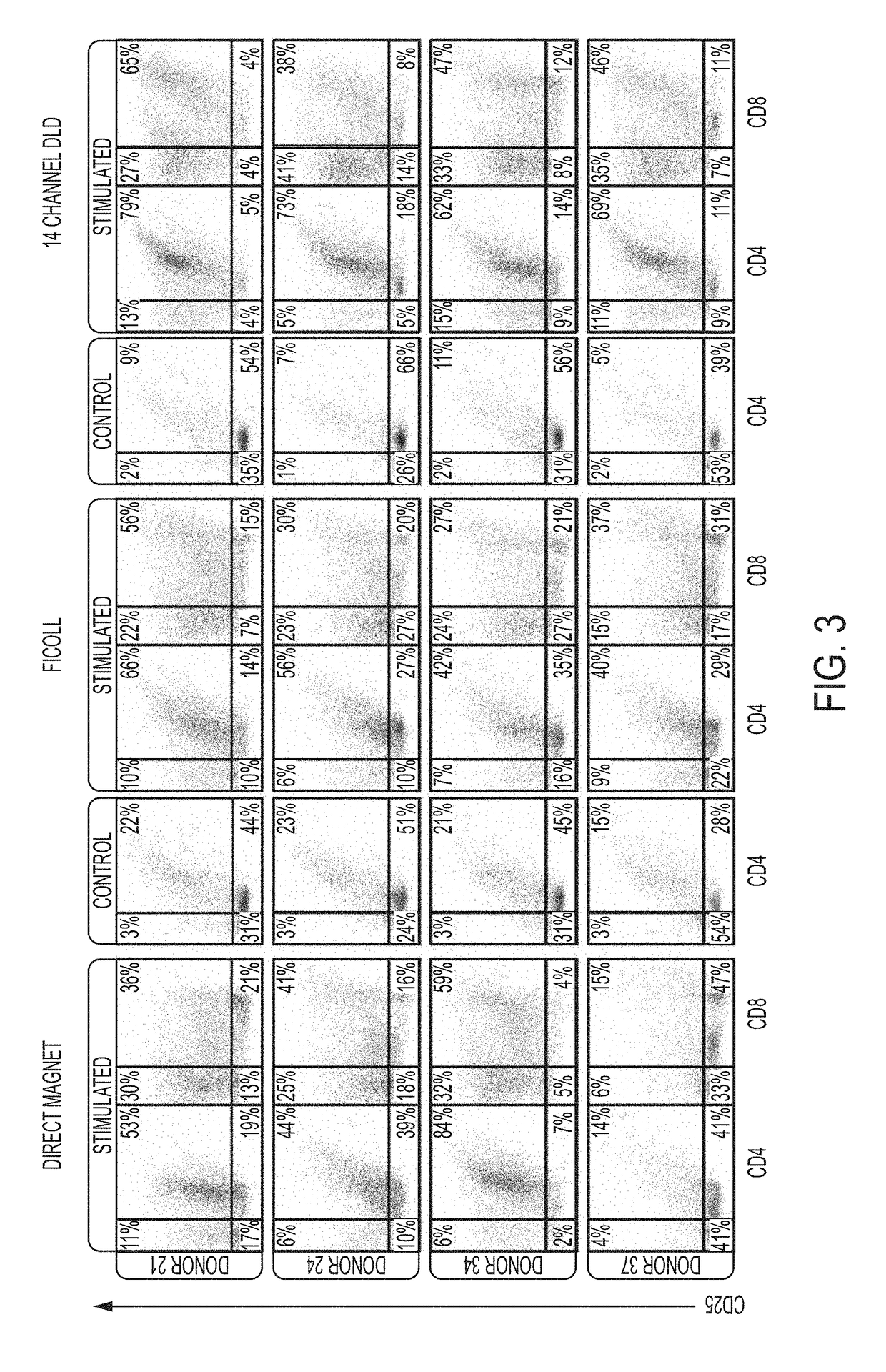Methods for Preparing Therapeutically Active Cells Using Microfluidics
a technology of microfluidics and cells, applied in the field of cells, can solve the problems of labor-intensive process for personalized therapy preparation of cells, and achieve the effects of less senescence, stable cells, and convenient size-based microfluidic separation
- Summary
- Abstract
- Description
- Claims
- Application Information
AI Technical Summary
Benefits of technology
Problems solved by technology
Method used
Image
Examples
example 1
[0542]This study focuses on apheresis samples, which are integral to CAR-T-cell manufacture. The inherent variability associated with donor health, disease status and prior chemotherapy all impact the quality of the leukapheresis collection, and likely the efficacy of various steps in the manufacturing protocols (Levine, et al., Mol. Therapy: Meth. Clin. Dev. 4:92-101 (2017)). To stress test the automated DLD leukocyte enrichment, residual leukocytes (LRS chamber fractions) were collected from plateletpheresis donations which generally have near normal erythrocyte counts, 10-20-fold higher lymphocytes and monocytes and almost no granulocytes. They also have ˜10-fold higher platelet counts, as compared to normal peripheral blood.
[0543]12 donors were processed and yields were compared of major blood cell types and processivity by DLD versus Ficoll-Hypaque density gradient centrifugation, a “gold standard.” 4 of these donors were also assessed for “T-cell expansion capacity” over a 15-...
example 2
Platelet Add Back Experiment
[0569]Rationale
[0570]Previously, it has been found that WBC derived from the DLD isolation and purification are healthy and responsive to activation by CD3 / CD28 antibodies and differentiate towards their Tcm (T central memory) phenotype (Campos-Gonzalez, et al., SLAS, Jan. 23, 2018, published online doi.org / 10.1177 / 2472630317751214). Additionally, in the presence of IL-2 Tcm cells expand and proliferate accordingly and similarly to cells derived from other methods, like Ficoll.
[0571]A key feature of the DLD cell purification is the efficient removal of red blood cells and platelets to provide a highly purified white blood cells (WBC) product. In comparison, Ficoll-derived white blood cells (PBMC's) show more contaminating red blood cells and platelets depending on the sample quality. On average the platelet “contamination” in the Ficoll-derived cells is 44% has a range of about 22% of variability whereas the DLD cells exhibit only a 17% platelet contamina...
PUM
| Property | Measurement | Unit |
|---|---|---|
| Fraction | aaaaa | aaaaa |
| Time | aaaaa | aaaaa |
| Time | aaaaa | aaaaa |
Abstract
Description
Claims
Application Information
 Login to View More
Login to View More - R&D
- Intellectual Property
- Life Sciences
- Materials
- Tech Scout
- Unparalleled Data Quality
- Higher Quality Content
- 60% Fewer Hallucinations
Browse by: Latest US Patents, China's latest patents, Technical Efficacy Thesaurus, Application Domain, Technology Topic, Popular Technical Reports.
© 2025 PatSnap. All rights reserved.Legal|Privacy policy|Modern Slavery Act Transparency Statement|Sitemap|About US| Contact US: help@patsnap.com



